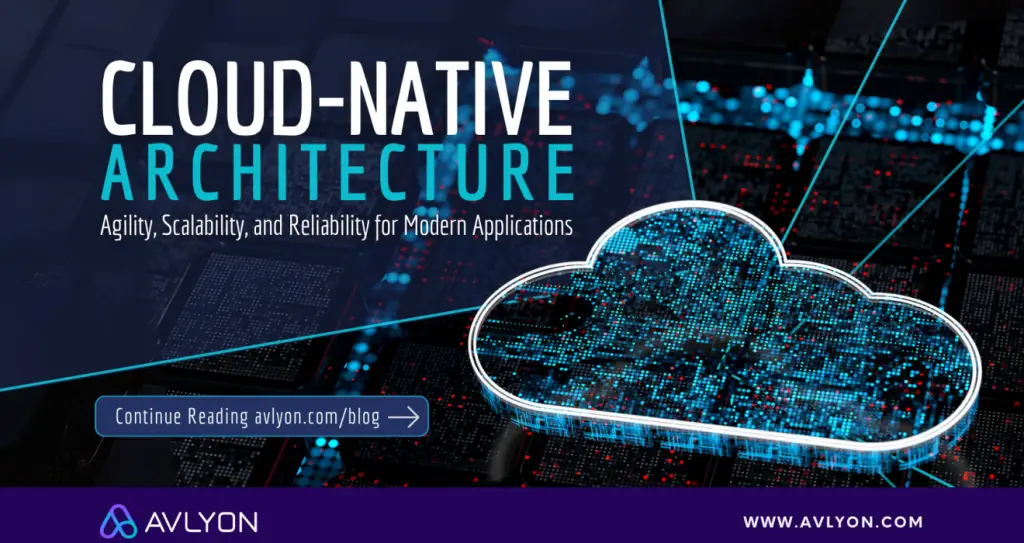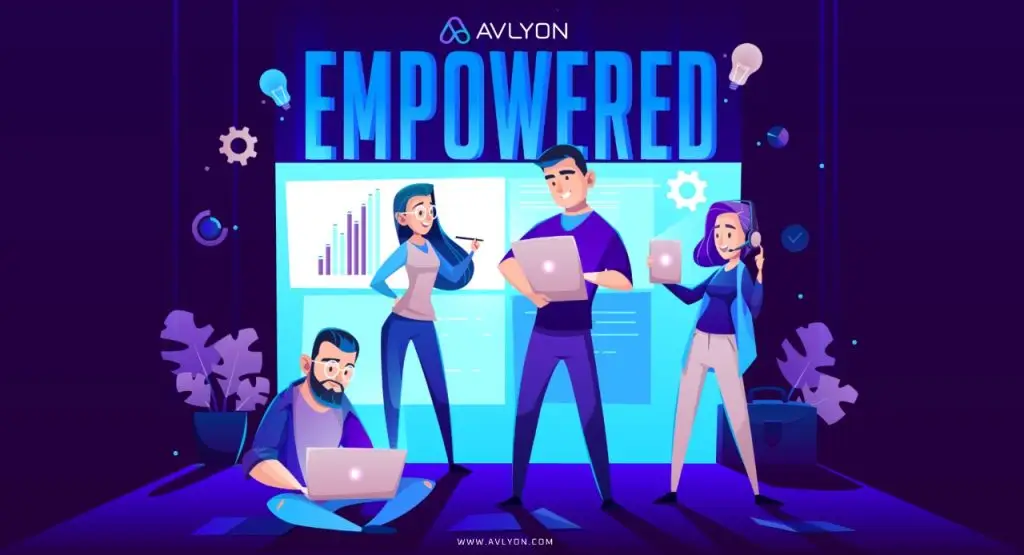Cloud-Native Architecture for Modern Applications: Building Agility, Scalability, and Reliability

Cloud-Native Architecture for Modern Applications: Building Agility, Scalability, and Reliability Modern businesses need applications that are fast, adaptable, and able to handle unpredictable workloads. Legacy monolithic systems often fall short, leaving companies struggling with downtime, costly maintenance, and limited flexibility. Cloud-native architecture changes this by combining microservices, containerization, and automation into a framework that makes scaling and innovation easier. According to CNCF’s 2024 State of Cloud Native report, 84% of organizations are running containers in production, highlighting how cloud-native has moved from early adoption to mainstream practice. Why Cloud-Native Matters Unlike traditional systems that rely on centralized designs, cloud-native applications are built to perform in dynamic environments. They use cloud services to deliver faster deployment, stronger resilience, and continuous scalability. Businesses that adopt this approach reduce time-to-market, maintain reliable performance during demand spikes, and cut infrastructure waste. Key benefits include: Agility: Continuous delivery and rapid iteration cycles shorten development timelines. Scalability: Systems adjust automatically to demand, avoiding over-provisioning or outages. Resilience: Distributed microservices limit the impact of failures and speed up recovery. Efficiency: On-demand resources lower operating costs compared to static infrastructure. Building Stability Before Scaling Successful AI feature rollouts begin in controlled environments. Instead of exposing all users to a new model immediately, teams should adopt incremental testing. Shadow deployments, where AI models run silently in the background, allow predictions to be compared against real outcomes without affecting user experience. Similarly, phased A/B testing ensures that features demonstrate measurable improvements before being scaled further. At Avlyon, our engineering teams guide clients through phased rollouts with robust monitoring. This approach minimizes risk while building confidence that AI features are ready to scale responsibly. Core Principles of Cloud-Native Architecture MicroservicesApplications are divided into small, independent services. This structure improves development velocity and prevents single points of failure. ContainersTechnologies such as Docker and Kubernetes package applications with dependencies, ensuring consistency across environments and simplifying deployment at scale. DevOps and AutomationAutomated CI/CD pipelines streamline releases, reduce errors, and support continuous improvement. Observability and Monitoring Monitoring tools track system health in real time. Metrics such as latency, throughput, and error rates help teams detect and resolve issues before they affect users. Challenges in Cloud-Native Adoption Adopting cloud-native requires more than tools; it demands a mindset shift and new processes. Cultural Change: Teams must embrace DevOps collaboration instead of working in silos. Operational Complexity: Distributed systems need robust monitoring and governance to avoid blind spots. Security Risks: Containers and APIs expand the attack surface, making proactive security practices essential. A McKinsey survey found that 70% of cloud-migration programs stall due to operational and cultural barriers, underlining the importance of leadership, planning, and cross-functional alignment. Real-World Impact of Cloud-Native Enterprises across industries are already achieving measurable gains: Retailers scale microservices during seasonal sales to handle 10x traffic without disruption. Fintech firms use container orchestration to ensure secure, uninterrupted digital payments. SaaS providers accelerate release cycles, moving from quarterly updates to weekly improvements. At Avlyon, our engineering teams design and implement cloud-native systems that balance speed with stability. We help clients deploy strategies that are technically sound, cost-efficient, and future-ready. Final Thought Cloud-native architecture is more than a technology shift. It is a foundation for building applications that adapt quickly, scale responsibly, and maintain long-term resilience. By embracing microservices, containers, automation, and governance, organizations set themselves up for innovation and sustainable success. At Avlyon, we guide businesses through this transition, ensuring they gain not just the benefits of the cloud, but the confidence that their systems are designed to grow and evolve with them. If your team is ready to unlock the potential of cloud-native, visit www.avlyon.com to connect with our experts.
Empowered Engineering Teams

Empowered Engineering Teams In today’s fast-paced digital world, customers expect seamless digital experiences and rapid innovation. For organizations aiming to meet these demands, the secret lies in creating highly skilled, empowered engineering teams. These teams excel by focusing on three critical dimensions of product success: viability, usability, and feasibility. By working iteratively and collaboratively, they consistently solve customer problems and deliver value through custom software solutions, product engineering and scalable processes while crafting world-class user experiences. Here’s how they do it: How Empowered Teams Operate Iterative Problem-Solving: Empowered teams thrive in agile environments, breaking down complex problems into manageable chunks. By iteratively delivering small, testable features, they ensure a consistent flow of value while minimizing risks. Rapid Prototyping and Testing: Teams use prototyping and continuous user feedback to test ideas early and often. This iterative approach allows them to pivot quickly, saving time and resources. Alignment with Goals: By focusing on high-impact objectives rather than a laundry list of features, teams ensure their work contributes directly to customer satisfaction and organizational success. Balancing Key Dimensions: Successful teams evaluate viability (will this solution achieve the desired business outcomes?), usability (is the solution intuitive and delightful for users?), and feasibility (can it be built with available technology and resources?) at every step. Deeper Domain Understanding: These teams invest time to deeply understand the client’s vision, product domain, and customer pain points. This knowledge enables them to craft solutions that address real challenges effectively. Autonomy and Accountability: Empowered teams have the autonomy to make decisions within their domain, fostering ownership and accountability. This autonomy drives innovation and motivates the team to deliver exceptional results. Quality as a Shared Responsibility: In empowered teams, quality is never an afterthought. Every team member, from engineers to designers, owns the responsibility for delivering a high-quality product. This collective commitment ensures excellence is embedded into every step of the process. Delivering Value: A Continuous Cycle Empowered teams excel because they understand that delivering value is a journey, not a destination. Here’s how they do it: Understanding Customer Problems: Through research, interviews, and analytics, the team gains a deep understanding of customer pain points. Prioritizing Outcomes Over Outputs: Instead of focusing on the number of features delivered, they emphasize outcomes, measurable improvements to the customer experience. Continuous Improvement: Retrospectives and feedback loops enable teams to learn from successes and failures, continuously refining their processes and solutions. Creating World-Class Experiences The magic of an empowered team lies in its ability to combine technical excellence with user-centric design. By aligning around a shared vision and leveraging the strengths of each team member, these teams create products that stand out in competitive markets. They deliver value not just through functionality, but by crafting experiences that resonate with users and solve their problems seamlessly. The Role of Leadership in Building Empowered Team A key factor in the success of empowered teams is the leadership that nurtures and builds them. Experienced leaders play a pivotal role in creating the right environment, one where collaboration, trust, and innovation flourish. At Avlyon, our leadership team is deeply experienced in building such teams and differentiates itself in impactful ways. By empowering teams with the right tools, guidance, and support, we ensure they are set up to succeed. The Anatomy of an Empowered Engineering Team Here is a typical team anatomy: Tech Lead : Acting as the technical guide, the TL ensures the team’s solutions are scalable, reliable, and aligned with the company’s technical vision. This role owns the Feasibility dimension. Engineers: Engineers bring ideas to life. Whether writing clean, efficient code or developing cutting-edge solutions, they are the backbone of the team’s delivery capabilities. Designers: Designers focus on user experience (UX) and user interface (UI), ensuring that products not only work but also delight users. Their empathy driven approach translates customer needs into intuitive, aesthetic interfaces. This role owns the Usability dimension. Product Owner (PO): Acting as the voice of the customer, the PO prioritizes features and ensures the team’s work aligns with business objectives and user needs. They balance the strategic and tactical to keep the team focused on delivering value. This role owns the viability dimension. Final Thoughts In an era where digital transformation and agility are non-negotiable, empowered engineering teams are the engine that drives consistent value delivery. By fostering collaboration, autonomy, and a relentless focus on the customer, organizations can transform how they solve problems and deliver custom software solutions. The key to success lies in trusting the team, empowering them to make decisions, and giving them the tools they need to thrive. At Avlyon, we believe in the power of empowered teams. By building a culture of collaboration and innovation, we’re not just creating product, we’re shaping the future of customer experiences. Ready to empower your digital transformation journey? Partner with Avlyon to unlock scalable, innovative solutions tailored to your needs. Visit www.avlyon.com to learn more about how our engineering teams can help you achieve sustainable success and thrive in today’s dynamic marketplace.
